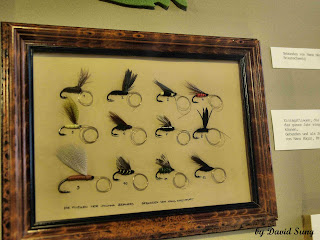錦鯉,觀賞魚怎麼會出現在坪林的金瓜寮溪中?想當然爾是不當人為野放!從民國98年2月~12月受學術單位所託,在金瓜寮進行外來魚種調查及移除工作,鯉魚或錦鯉便是攔砂壩上游主要的對象。
Variegated carp should be the appreciate fish in garden, how can it be found in Jing Gua Liao Stream? No doubtly it was introduced by people. We have been consigned by academic institution to condut field investigation and removal of invasive fish since Febuary to December of 2009. Carps is the primary target above the upstream of check dam.
鯉魚或錦鯉出現後,不僅溪流中的螺貝類,如川蜷、瘤蜷;甲殼類,如粗糙沼蝦遭到威脅,就連原生溪魚的產卵場也出現危機,加上牠們喜愛掘底攝食的特性,很容易將潭區泥沙捲起,增加溪水中的懸浮微粒,進而提升陽光加溫的效率,使溪水溫度上升。
The existence of carp not only threatens the native shells and shrimps in the stream, carps also occupies the riverbed where native fish lays egg. Additionally, carps often search food by excavating on the riverbed, and such feeding behavior raises the mud in the pool. The muddy water absorbs much heat from sun shine easily which cause water temperature raise higher.
有鑑於此,先前的採樣與打標,以及甲殼類定量調查就顯得很重要了。因為有了這些數據,才可以在秋季進行移除作業。而本文的錦鯉,當然是對象之一,打完標再釋獲的牠,就等秋天時護溪隊一併以網具移除吧!
The sample collection, tag hitting and quantitatively investigation were the critical works during the research. After acquiring sufficient data on hand, then we can remove invasive species in the autumn. The variegated carp with tag, of course, was the removal target. By the autumn, the inspection team would use net to remove invasive species, and the carp would not be luckily released again.
The most difficult part for fishing carp in conservation zone is how to avoid hooking the other native fish. Thus, toast fly was the good solution. Among the tourists on the bike way, only one woman was well aware that I targeted the variegated carp as the only one objective.













